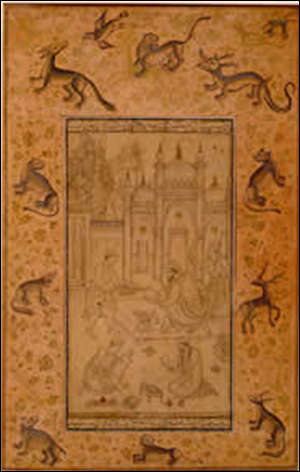EXHIBITION
All I leave behind me is between the two covers.
—saying of the Prophet Muhammad
Exhibition Director: Barbara von Schlegell, Assistant Professor of Islamic Studies, Department of Religious Studies, University of Pennsylvania
The Qur'an is usually discussed as a sacred text: the pure, uncorrupted word of God, bound between two covers. Often overlooked, however, are some of the technical issues surrounding its production and dissemination, and the ways in which it is used in both theoretical and practical terms in everyday life. What, then, is a sacred text? How do people use this book, known in Arabic as al-kitab? And how does this sacrality transform when it comes out from between the two covers, adorning everything from ceramic tiles to computer screens?
Islam’s sacred text was revealed to the Prophet Muhammad in Mecca early in the seventh century. The transmission of the text initially was oral, which gave it its name, “Qur’an,” derived from the Arabic word meaning “to recite.” Soon transferred to written form after the death of the Prophet, the messages within the Qur’an were carried with Muslims wherever Islam spread.
As Islam expanded over geographic, linguistic, and cultural boundaries, the words of the Qur’an emerged from between the two covers left by the Prophet. Dictionaries, prayer books, and books on proper recitation technique developed based on the Qur’an. It was used as the basis for law books. Some people found the words acceptable as a form of decoration, others did not. Some found protection in the word of God in the form of jewelry or amulets, others found this practice abhorrent. As Islam encountered other religions, the validity of the Qur’an was challenged as people translated it into Latin, German, English, and French. All the while the Qur’an, in its most essential form, remained to all Muslims what it does today: the Miracle of God.
The scope of contact between people and written surfaces is virtually infinite. In the instance of the Qur’an the people involved range from copyists, binders, calligraphers, and translators who copy the written word of God, to metalworkers, weavers, and ceramicists, who make objects for daily use inscribed with the most popular verses of the Qur’an. Outside of the immediate world of production, there are city officials and guilds that regulate the prices of books, textiles, and trade. These objects have varied homes: mosques, houses, libraries, and museums. Finally, certain surfaces find their way into very intimate circumstances: wrapped around a neck or placed into a pocket, to be repeatedly touched and caressed by one individual. The Qur’an’s spiritual and symbolic power may be accessed by each person who comes in contact with the object, and evolves every time that object is reexamined.
The Qur’an
February 21, 2003 (Friday)—April 6, 2003 (Sunday)
Rosenwald Gallery
6th floor, University of Pennsylvania Library
3420 Walnut Street, Philadelphia



